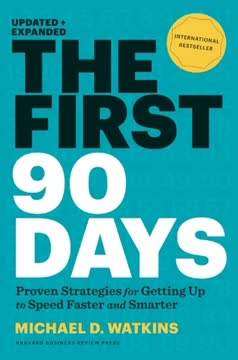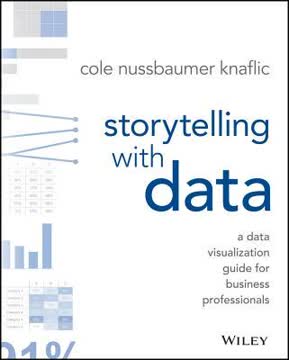Key Takeaways
1. Deception is pervasive in modern society, with most people encountering hundreds of lies daily
According to studies by several different researchers, most of us encounter nearly two hundred lies a day.
Deception is ubiquitous. From white lies to protect feelings to deliberate fraud, lying has become an integral part of human interaction. Research indicates that people lie in one in ten interactions with their spouses and one in three interactions with non-spouse individuals. The prevalence of deception extends to various aspects of life:
- 66% of job interviewees are misled about company financial status
- 83% of college undergraduates lie to get a job
- Almost half of workers admit to unethical or illegal actions at work
Technology amplifies deception. The digital age has created new avenues for dishonesty, with online interactions often lacking the face-to-face cues that help detect lies. Examples include:
- Phishing scams costing victims $3.2 billion annually
- Résumé fraud becoming increasingly common and sophisticated
- Social media platforms enabling the rapid spread of misinformation
2. Humans are naturally biased towards believing others, making lie detection challenging
The average adult can distinguish truth from falsehood only 54 percent of the time.
Truth bias hinders detection. Humans have evolved to maintain a "truth bias" - a tendency to assume others are being honest unless given reason to believe otherwise. This bias serves important social functions but makes us vulnerable to deception. Factors contributing to poor lie detection include:
- Overconfidence in personal lie-detecting abilities
- Reliance on unreliable "tells" like lack of eye contact
- Difficulty interpreting subtle nonverbal cues
Improving lie detection. While perfect accuracy is impossible, individuals can significantly enhance their ability to spot deception through training and practice. Studies show that:
- Even brief training can improve lie detection accuracy by 25-50%
- Focusing on clusters of behavioral cues rather than single "tells" increases effectiveness
- Developing a baseline of normal behavior for individuals helps identify deviations
3. Facial expressions, body language, and verbal cues reveal hidden emotions and deception
When we feel an emotion, our brain sends a message to our face so that we can show that emotion. The process happens so fast that often our face expresses what we feel even before we're conscious of the feeling.
Micro-expressions betray emotions. Involuntary facial movements lasting fractions of a second can reveal true feelings that contradict spoken words. The seven universal micro-expressions are:
- Happiness
- Sadness
- Anger
- Fear
- Disgust
- Surprise
- Contempt
Body language speaks volumes. Nonverbal cues account for 65% of communication, providing valuable insights into a person's emotional state and potential deception. Key indicators include:
- Changes in posture or movement patterns
- Increase or decrease in illustrator gestures
- Incongruence between verbal and nonverbal messages
Verbal leaks reveal hidden thoughts. Specific language patterns and speech characteristics can indicate deception:
- Use of distancing language or third-person references
- Lack of contractions in denials ("I did not" vs. "I didn't")
- Changes in speech rate, tone, or volume
4. The BASIC method provides a structured approach to uncovering lies in conversations
BASIC has only five steps: Baseline Behavior, Ask Open-ended Questions, Study the Clusters, Intuit the Gaps, Confirm.
Establish a baseline. Observe the subject's normal behavior patterns, including:
- Typical posture, gestures, and facial expressions
- Speech patterns and vocal characteristics
- Reactions to various emotional stimuli
Elicit information strategically. Use open-ended questions to encourage detailed responses and observe potential deception indicators:
- Avoid yes/no questions that allow for simple denials
- Frame inquiries to minimize defensiveness
- Pay attention to both verbal and nonverbal responses
Analyze behavioral clusters. Look for groups of deception indicators rather than relying on single "tells":
- Facial micro-expressions that contradict spoken words
- Changes in body language or gestures
- Verbal cues like distancing language or qualifiers
Trust your intuition. Recognize when something feels "off" about a person's story or behavior:
- Notice inconsistencies or gaps in the narrative
- Pay attention to emotional mismatches
- Consider the broader context of the situation
Confirm your suspicions. Use targeted follow-up questions to verify potential deception:
- Ask for clarification on specific details
- Encourage the subject to elaborate on key points
- Observe reactions to challenging or unexpected inquiries
5. High-stakes situations like negotiations and job interviews are breeding grounds for deception
When the stakes are high, those who are given a chance to lie will almost always take that chance.
Negotiation tactics often involve deception. Research shows that people are more likely to lie when there are significant incentives at stake. Common negotiation lies include:
- Misrepresenting bottom lines or walk-away points
- Exaggerating or fabricating competing offers
- Concealing relevant information about the deal
Job seekers frequently embellish credentials. Studies indicate that a high percentage of résumés contain false or misleading information:
- 44% of résumés examined in one study contained exaggerations or fabrications
- 83% of undergraduates admitted to lying to obtain a job
- Even high-level executives have been caught falsifying credentials
Strategies for lie-proofing high-stakes interactions:
- Conduct thorough background checks and verify claims
- Use structured interview techniques to elicit detailed responses
- Implement multi-stage vetting processes for important decisions
- Foster a culture of transparency and ethical behavior
6. A deception audit can identify and address systemic vulnerabilities in an organization
A deception audit is an in-depth investigation performed by an objective external set of experts who analyze your organization's susceptibility to fraud and deception at three levels—policy, infrastructure, and human.
Comprehensive assessment. A deception audit examines potential vulnerabilities across multiple dimensions:
- Policy: Evaluating existing guidelines, codes of conduct, and ethical standards
- Infrastructure: Assessing systems, processes, and controls that could enable deception
- Human: Analyzing organizational culture, incentives, and individual behaviors
Identifying risk factors. Common issues uncovered in deception audits include:
- Unclear or inconsistent communication of ethical expectations
- Inadequate checks and balances in financial processes
- Incentive structures that inadvertently encourage deceptive practices
- Lack of safe channels for reporting concerns or wrongdoing
Implementing solutions. Based on audit findings, organizations can take steps to reduce fraud and deception:
- Strengthening internal controls and oversight mechanisms
- Providing ethics training and fostering a speak-up culture
- Aligning incentives with ethical behavior and long-term value creation
- Regularly reassessing and updating anti-fraud measures
7. Building a trusted "brain trust" of advisors is crucial for personal and professional success
A brain trust is a small, select group of people you choose for their ability to offer ongoing wisdom, expertise, and support as you progress toward your personal and professional goals.
Selective membership. Carefully choose individuals who possess:
- Personal trust: Demonstrated honesty, reliability, and discretion
- Expertise trust: Relevant knowledge and experience in key areas
- Structural trust: Ability to provide unbiased advice without conflicts of interest
Diverse perspectives. Include advisors from various backgrounds:
- Business associates from different levels and departments
- Forward-thinking individuals with broad industry knowledge
- Trusted paid advisors like lawyers or accountants
Ongoing maintenance. Nurture your brain trust relationships:
- Provide regular updates on your progress and challenges
- Seek their input on major decisions and strategic moves
- Offer reciprocal support and value to your advisors
8. Fostering a culture of honesty and integrity is both ethical and good for business
Evidence shows that companies that actively foster the ideals aimed for by an audit often perform higher than those that don't.
Trust drives performance. Research indicates that organizations with high levels of trust and integrity experience:
- Stronger long-term financial results
- Lower employee turnover rates
- Increased job applications and ability to attract talent
- More cohesive and diverse workplace cultures
Leadership sets the tone. Executives and managers play a crucial role in establishing and maintaining ethical standards:
- Model honest behavior and transparent communication
- Implement clear policies and consequences for ethical violations
- Encourage open dialogue about ethical dilemmas and challenges
- Recognize and reward integrity in employee performance
Building a trust-based infrastructure. Organizations can create systems and processes that promote honesty:
- Implement robust internal controls and auditing procedures
- Provide ethics training and resources for all employees
- Establish confidential reporting mechanisms for concerns
- Regularly assess and improve the organization's ethical climate
Last updated:
FAQ
What's "Liespotting: Proven Techniques to Detect Deception" about?
- Overview: "Liespotting" by Pamela Meyer is a guide to detecting deception using scientifically proven techniques. It combines insights from psychology, interrogation, and facial recognition.
- Purpose: The book aims to equip readers with tools to identify lies in various settings, from personal relationships to high-stakes business negotiations.
- Structure: It is divided into two main parts: detecting deception and building trust, with practical methods and real-life examples.
Why should I read "Liespotting"?
- Practical Skills: The book offers actionable techniques to improve your ability to detect lies, which can be beneficial in both personal and professional contexts.
- Enhanced Awareness: It raises awareness about the prevalence of deception and provides strategies to protect oneself from being misled.
- Trust Building: Beyond detecting lies, it emphasizes the importance of building trust and creating honest environments.
What are the key takeaways of "Liespotting"?
- Deception is Common: The book highlights that the average person is lied to about 200 times a day, emphasizing the need for lie detection skills.
- BASIC Method: It introduces the BASIC method for lie-proof interviews, focusing on Baseline behavior, Asking open-ended questions, Studying clusters, Intuiting gaps, and Confirming suspicions.
- Trust and Deception: It underscores the balance between detecting deception and fostering trust, suggesting that a trust-based environment reduces the likelihood of deceit.
What is the BASIC method in "Liespotting"?
- Baseline Behavior: Establish a reference point for normal behavior to identify deviations that may indicate deception.
- Ask Open-ended Questions: Encourage detailed responses that can reveal inconsistencies or unexpected emotions.
- Study Clusters: Look for groups of verbal and nonverbal cues that suggest deceit, rather than relying on a single indicator.
How does "Liespotting" suggest building trust?
- Trust as a Foundation: The book emphasizes that trust is crucial for effective communication and reducing deception.
- Deception Audit: It recommends conducting a deception audit to identify and address vulnerabilities within an organization.
- Brain Trust: Building a small, reliable group of advisors can help maintain integrity and provide support in decision-making.
What are the common verbal cues of deception according to "Liespotting"?
- Parrot Statements: Repeating questions to buy time for crafting a response.
- Bolstering Statements: Using phrases like "to be honest" to add false credibility.
- Distancing Language: Avoiding personal pronouns to detach oneself from the lie.
What are the facial indicators of deception in "Liespotting"?
- Micro-expressions: Brief, involuntary facial expressions that reveal true emotions.
- Squelched Expressions: Attempts to mask emotions with a smile or other expressions.
- Asymmetrical Expressions: Uneven facial expressions that may indicate deceit.
How does "Liespotting" address body language in detecting lies?
- Emblems and Illustrators: Look for incomplete or awkward gestures that don't match speech.
- Mirroring: Lack of mirroring can indicate discomfort or deception.
- Stillness: Unnatural stillness may suggest a person is trying to control their body to avoid revealing a lie.
What are the high-stakes applications of "Liespotting"?
- Negotiations: The book provides strategies to detect deception in business negotiations, emphasizing the importance of preparation and setting a cooperative tone.
- Job Interviews: It highlights the prevalence of deception in job applications and offers techniques to identify falsehoods.
- Crisis Management: Conducting a deception audit can help organizations manage and prevent crises related to dishonesty.
What are the best quotes from "Liespotting" and what do they mean?
- "Detecting deception is a crucial skill": This underscores the importance of being able to identify lies to navigate personal and professional landscapes effectively.
- "No one can lie to you without your approval": It highlights the role of the listener in accepting or rejecting deception, emphasizing personal responsibility.
- "Trust reduces transaction costs": This quote illustrates how trust can streamline business processes and reduce the need for extensive due diligence.
How does "Liespotting" suggest handling detected deception?
- Non-confrontational Approach: The book advises against aggressive confrontation, suggesting instead to gather information and ask clarifying questions.
- Empathy and Understanding: Understanding the motives behind deception can help in addressing the issue constructively.
- Focus on Resolution: Aim to resolve the underlying issues that led to deception, rather than solely focusing on the act itself.
What is the role of intuition in "Liespotting"?
- Trust Your Gut: The book encourages trusting your instincts when something feels off, as intuition often picks up on subtle cues.
- Complementary Tool: Intuition should be used alongside other techniques, such as the BASIC method, to form a comprehensive approach to detecting deception.
- Unconscious Processing: Intuition is seen as the brain's way of processing information that may not be immediately obvious, making it a valuable asset in liespotting.
Review Summary
Liespotting received mixed reviews. Some readers found it insightful, offering useful techniques for detecting deception in business and personal settings. They appreciated the BASIC method and the focus on building trust. However, others felt the book was too focused on corporate applications and lacked practical advice for everyday situations. Some criticized the author for promoting her services and making unsupported claims. Overall, readers found the concept intriguing but were divided on the book's execution and applicability.
Similar Books









Download PDF
Download EPUB
.epub digital book format is ideal for reading ebooks on phones, tablets, and e-readers.




